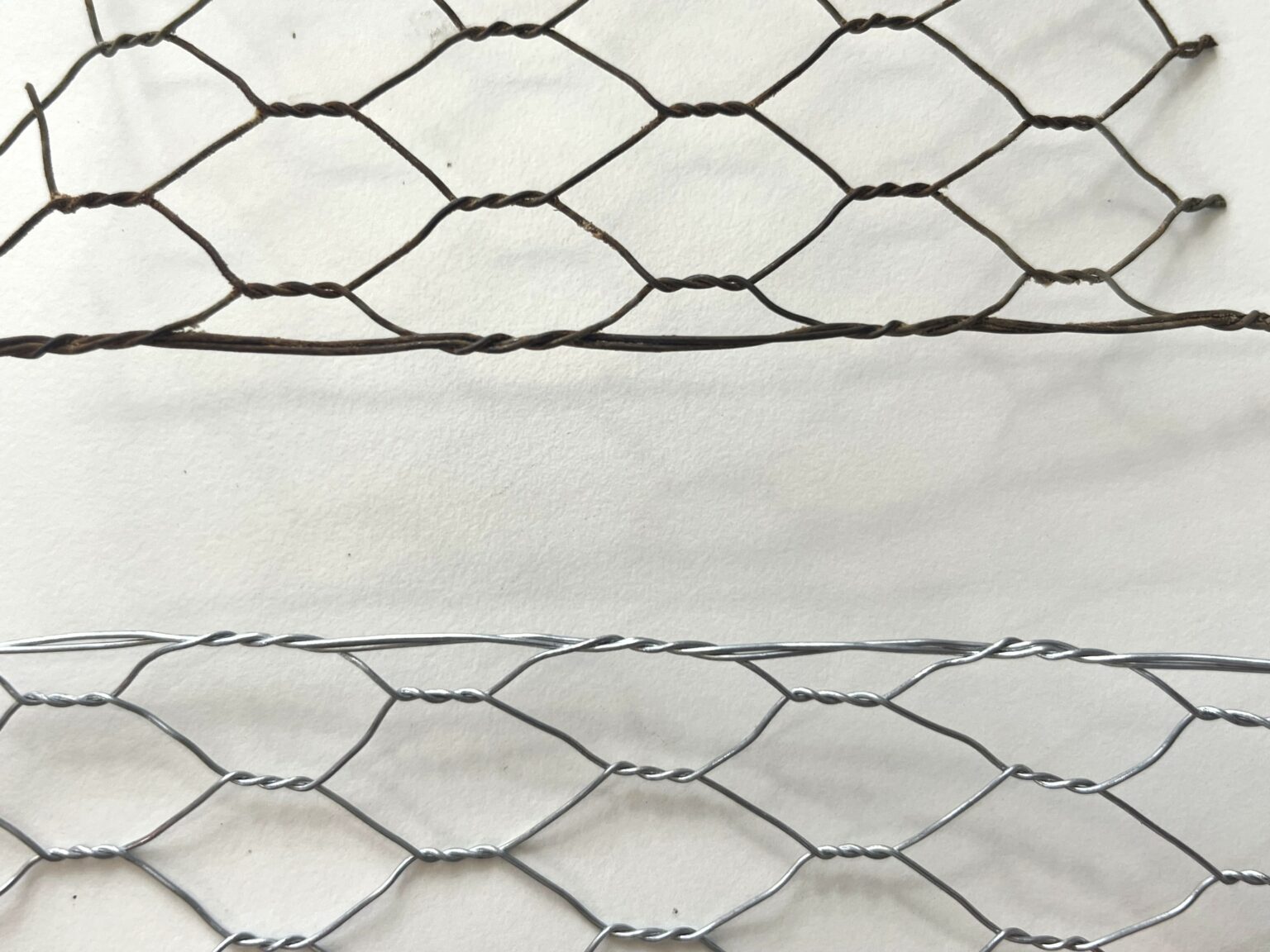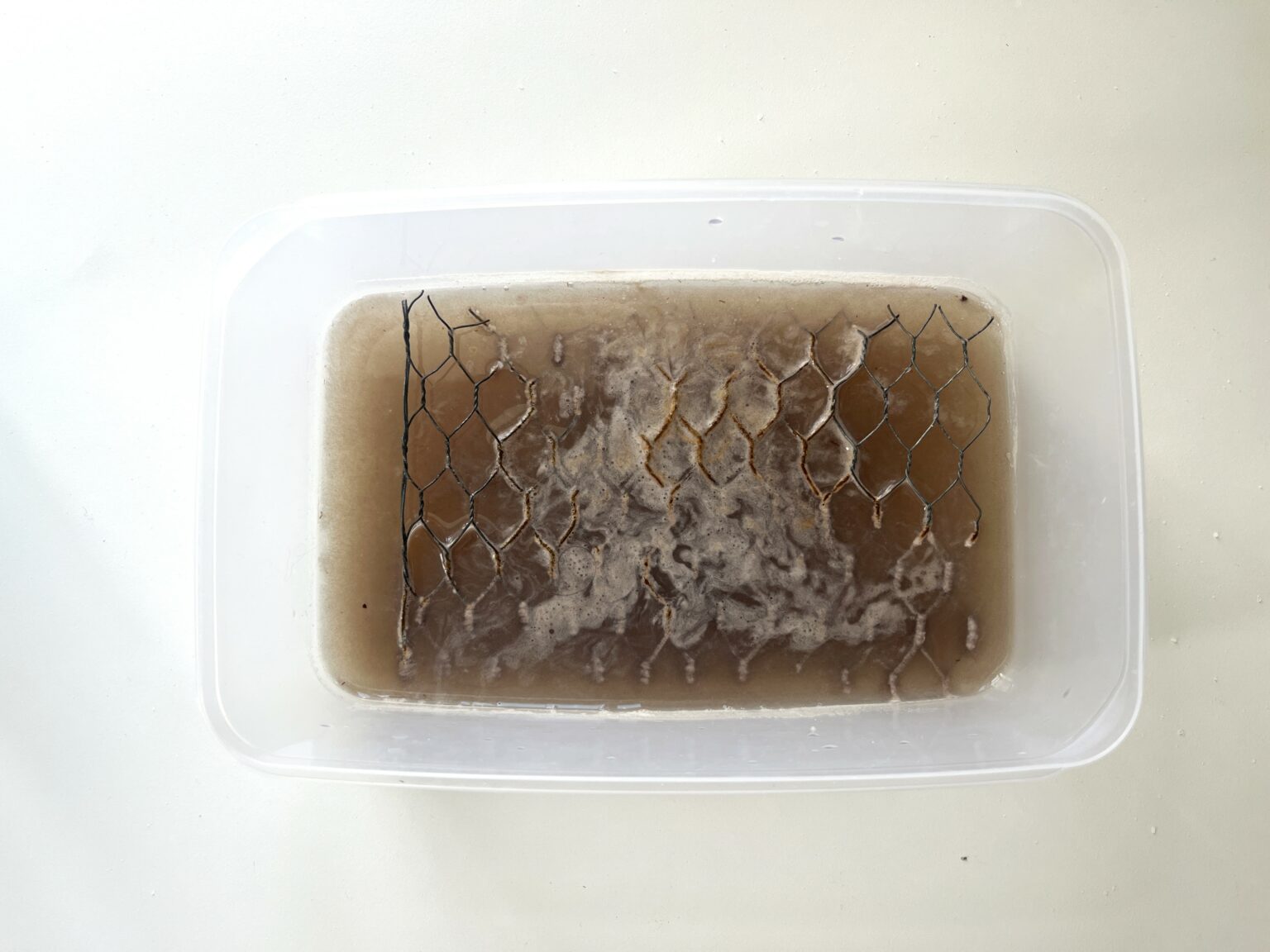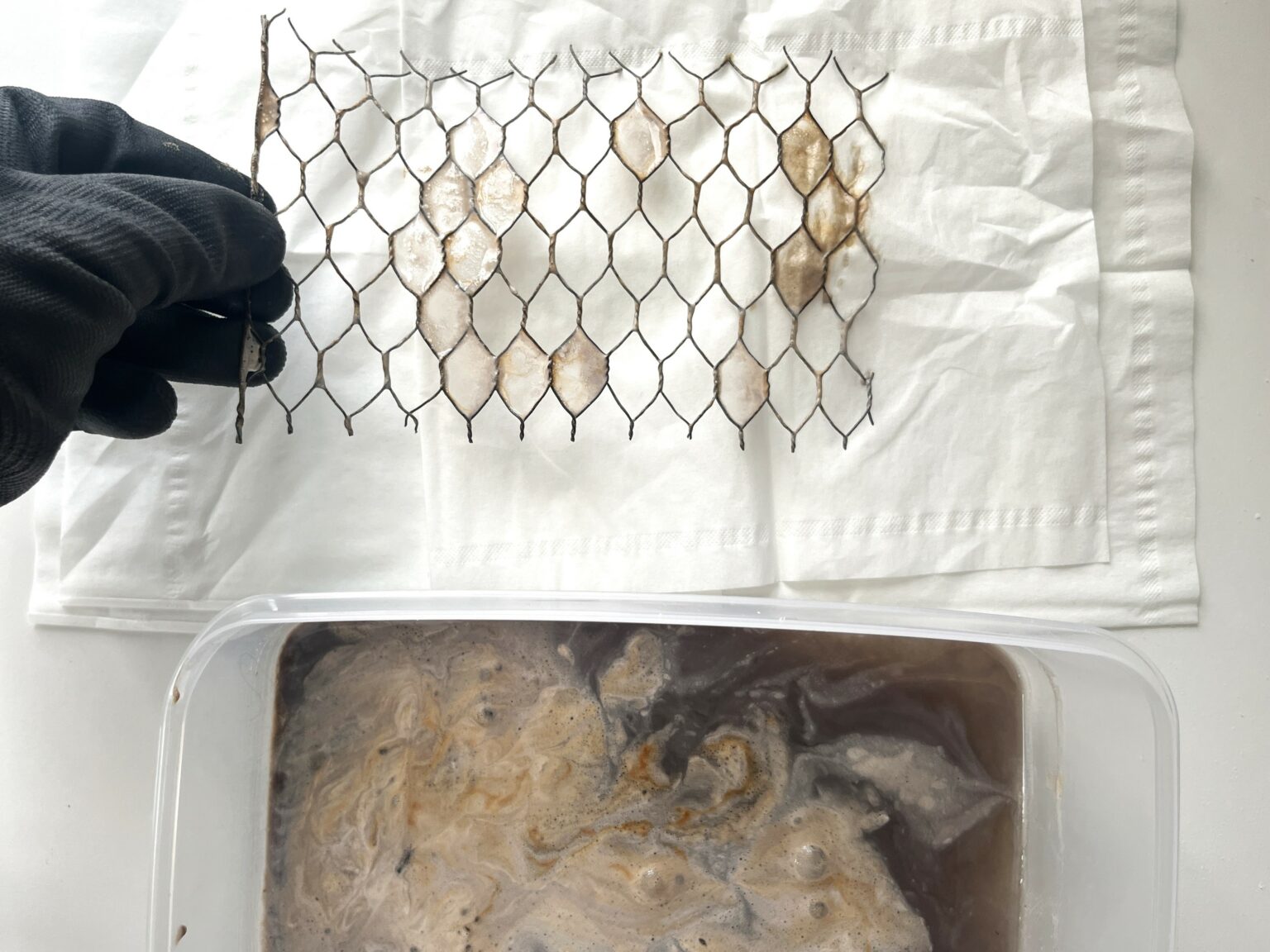How to Age Chicken Wire
This blog will show you how to age chicken wire with the oxidizing method.
OVERVIEW
- Experience Required: Easy
- Tools Required: Wire Cutters, Protective Gloves, Plastic Container, White Vinegar, Hydrogen Peroxide, Table Salt
- Materials Required: Chicken Wire
STEP 1) Prepare Your Supplies

- Gather all the supplies you need for the project
STEP 2) Cut to Size
- Cut the required amount of chicken wire for your project.
- Get a large enough container ready for the mesh.
STEP 3) Pour the Hydrogen Peroxide
- Take your plastic container outside, or to a well-ventilated area.
- Pour 8 parts hydrogen peroxide into the container.
STEP 4) Add the Vinegar
- Add 1 part vinegar to the hydrogen peroxide.
STEP 5) Add the Salt
- Add 1-2 tablespoons of table salt.
- Stir everything together using a wooden or plastic spoon.
- Remember to wear protective gloves while handling the mixture.
STEP 6) Submerge in Chemical Mixture
- Take your piece of mesh and place it into the container.
- Make sure it’s fully submerged for an even finish.
STEP 7) Leave to Oxidise
- Let the mesh oxidize for at least 30 minutes (but it can be longer).
- The liquid will change color and bubbles will form on the surface of the mesh.
- Make sure to have good ventilation or do this process outside to avoid fumes causing irritation.
STEP 8) Let Dry
- After the chicken wire has been sufficiently oxidized, remove it from the container and lay it on clean paper towels to dry.
- It is important to wear protective gloves when handling chemicals.
STEP 9) Finished Project
- After allowing the chicken wire to dry, you can utilise it for your various projects.
Tips and tricks
Alternative Aging Methods
Saltwater Method
The saltwater method involves soaking the wire in a saltwater solution and leaving it outdoors for a few days, periodically spraying it to enhance rusting. This natural approach can achieve a convincingly aged look.
Bleach and Vinegar
Combining bleach and vinegar in equal parts can also age wire effectively. Submerge or spray the mesh and let it sit for several hours, taking care to handle the mixture safely.
Chalkboard Paint








